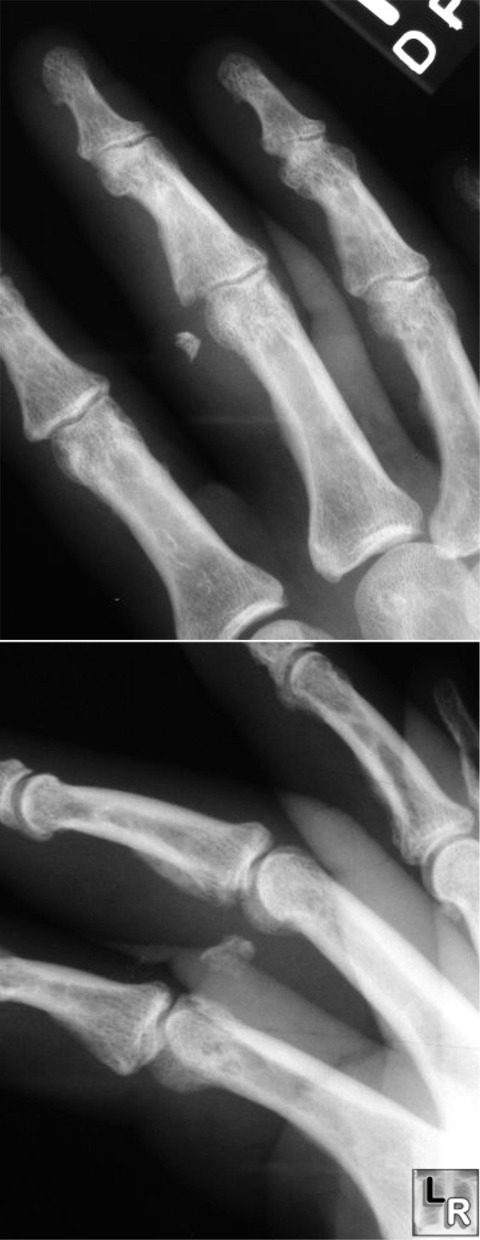|
|
Volar Plate Fracture
- Volar plate forms floor of PIP joint and separates
the joint space from the flexor tendons
- Volar plate is ligamentous at its origin on the
proximal phalanx
- Cartilaginous in its insertion onto the middle
phalanx
- Hyperextension injury
- Involves PIP joint of fingers
- Primarily a ligamentous injury that can result in
fracture
- Injury to the PIP joint is relatively common in
athletics, especially sports involving ball-handling
- If force of injury is
great enough, dorsal dislocation can occur
- Rupture of volar plate
may occur with longitudinal splitting of the collateral ligament
structures
- Allows for complete
dorsal displacement of middle phalanx
- Simple dislocations
easily reduced by player coach, or trainer on the field
- Following reduction,
most dorsal dislocations are stable
- Fractures of base of
middle phalanx also occur in association with dorsal dislocations
- If fracture involves
more than 40-50% of articular surface
- Collateral ligament
support is lost
- Combined with
coexistent volar plate disruption
- Represents major
loss of joint stability
- These injuries are
often unstable, exhibiting persistent subluxation of the middle
phalanx
- Imaging findings
- Small fragment of bone is avulsed from palmar
(volar) aspect of base of middle phalanx
- Complications
- Joint instability
- Associated collateral ligament tear may heal with
abundant fibrous tissue producing bump on one side of joint

Volar Plate Fracture. There is a small avulsed fragment of the base of the
middle phalanx of the middle finger from a volar plate injury
Michael E. Robinson, MD eMedicine.com
|
|
|